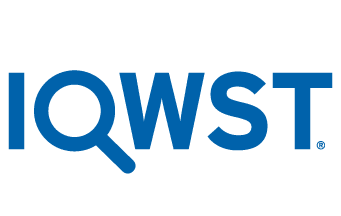
Transforming ALL Students into Scientists
This program’s “learning-by-doing” pedagogical approach engages students as active learners and makes science come alive in ways that research has shown best support the broad range of learners found in every classroom. Students investigate questions relevant to their own daily lives by conducting investigations, collecting and analyzing data, developing and using models to explain phenomena, and engaging in healthy debate from evidence.
IQWST® Investigating and Questioning our World through Science and Technology has the flexibility to meet all unique state standards, while also aligning with Next Generation Science Standards.
Investigation-Centered
Storyline Approach
Referencing real-world science with which students from all backgrounds are familiar allows students to value science learning, and apply what they are learning to their everyday lives.
Students Learn Like Scientists and Engineers
Students pursue their own original questions in units that integrate the fundamentals of Physical Sciences, Life Science, and Earth & Space Science.
Total Support
for Teachers
In person and online teacher support, educational webinars, lesson modeling, and much more is provided by our Professional Learning Team.
Need more info to decide if this the right curriculum for your district or school?
Curriculum Details
IQWST engages all students with shared phenomena, investigations, and opportunities to draw upon and connect their everyday life experiences with science content. Students experience phenomena firsthand through hands-on investigations manipulating science materials whenever possible to understand and explain the phenomena.
Additional Versions Available:
Student-Driven Learning
Curricular Coherence
IQWST utilizes Circular Coherence - revising and building on ideas across time. This provides students with opportunities to develop, reinforce, and apply their understandings on an ongoing basis throughout their middle school years.
Driving Question Board (DQB)
A powerful visual tool that puts students at the center of their learning experience! The Driving Question Board is a large poster board prominently displaying the driving question in each unit for exploring phenomena at its center, surrounded by sub-questions that represent the main learning goals. It’s a collaborative creation, jointly constructed by both students and the teacher at the start of the unit, and it evolves throughout the learning process.
Instructional Design with Teachers in Mind
Classroom Implementation
IQWST Teacher Edition includes lesson plans, discussion questions, differentiation strategies, and background information for each unit, and Video Tutorials on activity set ups are also available.
Remote Learning Options
The Remote Learning Lesson Plans condense what is taught in each activity with specific teaching recommendations and identify the digital resources, print resources, and materials needed to teach and learn outside of the classroom.
Claim, Evidence, & Reasoning (CER)
The CER Framework was born and developed in IQWST as a result of teachers’ desire to better support their students as scientific thinkers and writers.
IQWST 3.0 Units
IQWST units are arranged in a recommended sequence to optimize coherence and build content understanding over time. However, many districts have successfully developed additional sequences to meet the needs of their students and districts.
Lessons are organized into thematic units such as Can I Believe My Eyes? (Physical Science) and What's Going on Inside Me? (Life Science), that support students as they build an understanding of core ideas in science as well as understanding and use of scientific practices.
Digital Platform
The Activate Learning Digital Platform (ALDP) hosts the interactive digital edition of the IQWST teacher and student curriculum materials.
The platform is designed for student accessibility and inclusion and offers embedded translation for over 130 languages and text-to-speech with read-along highlighting in 35 languages.
Featuring an intuitive user experience, teachers have everything they need to Plan, Teach, Assign, and Assess lessons in a platform that is integrated with leading SIS rostering and Learning Management Systems such as Google Classroom, Schoology, and Canvas.
And with Lesson Launch, teachers can quickly view slides, handouts, student edition, and materials in one place!
IQWST Middle School Assessments
ONPAR Digital Assessments to Effectively Gauge Student Learning
ONPAR digital assessments are aligned to the Next Generation Science Standards for Middle School. They challenge students to think deeply about science ideas while engaging in science and engineering practices and crosscutting concepts. These three-dimensional assessments integrate perfectly with the IQWST program.
In addition, ONPAR assessments have been found to be beneficial by many districts in providing student experience with the format and content of state tests.
Activate Learning Insight™ Supplemental Assessments
Built on the Activate Learning Digital Platform, Activate Learning Insight™ offers hundreds of pre-made assessments aligned to IQWST designed to help teachers evaluate student understanding across NGSS Performance Expectations and Disciplinary Core Ideas.
About The Authors
IQWST® was developed through grant funding from the National Science Foundation (NSF). The development team has combined expertise in science education, literacy education, and the learning sciences. The team was led by Principal Investigators Joe Krajcik, Ph.D., Brian Reiser, Ph.D., LeeAnn Sutherland, Ph.D., and David Fortus, Ph.D.
*This material is based upon work supported by the National Science Foundation under Award No. DRL 0439352 and ESI 0101780. Any opinions, findings, and conclusions, or recommendations expressed in this material are those of the author(s) and do not necessarily reflect the views of the National Science Foundation.
Testimonials Hear Directly from Administrators & Teachers
Additional Resources

Student Experiences with IQWST at Baltimore Public Schools

What is the Driving Question Board?

